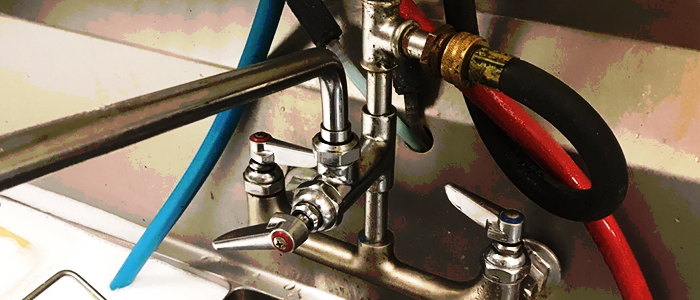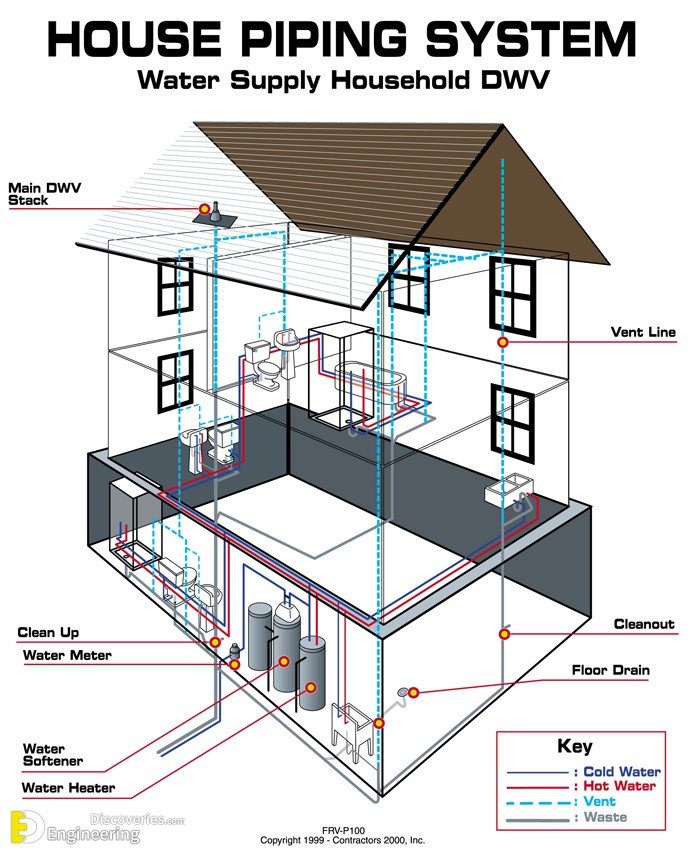How The Anatomy of Your House's Plumbing System Matters
How The Anatomy of Your House's Plumbing System Matters
Blog Article
This great article down below pertaining to Plumbing Installation 101: All You Need to Know is definitely informative. Read it yourself and figure out what you think of it.

Recognizing just how your home's pipes system functions is essential for each home owner. From delivering tidy water for drinking, food preparation, and bathing to safely eliminating wastewater, a well-kept pipes system is critical for your family's wellness and convenience. In this comprehensive guide, we'll explore the elaborate network that makes up your home's pipes and offer tips on maintenance, upgrades, and handling common issues.
Introduction
Your home's pipes system is greater than simply a network of pipelines; it's a complex system that ensures you have access to tidy water and reliable wastewater removal. Understanding its components and how they work together can help you prevent pricey fixings and make sure everything runs efficiently.
Standard Elements of a Plumbing System
Pipes and Tubes
At the heart of your pipes system are the pipelines and tubes that bring water throughout your home. These can be made from various products such as copper, PVC, or PEX, each with its benefits in regards to sturdiness and cost-effectiveness.
Fixtures: Sinks, Toilets, Showers, etc.
Components like sinks, commodes, showers, and tubs are where water is utilized in your home. Understanding just how these components link to the plumbing system aids in identifying issues and planning upgrades.
Shutoffs and Shut-off Factors
Shutoffs control the circulation of water in your pipes system. Shut-off valves are crucial throughout emergency situations or when you need to make fixings, permitting you to isolate parts of the system without disrupting water circulation to the whole house.
Water Supply System
Key Water Line
The primary water line connects your home to the metropolitan supply of water or a private well. It's where water enters your home and is distributed to various components.
Water Meter and Pressure Regulatory Authority
The water meter procedures your water usage, while a stress regulatory authority makes sure that water flows at a safe stress throughout your home's plumbing system, preventing damage to pipes and components.
Cold Water vs. Warm water Lines
Comprehending the distinction in between cold water lines, which supply water directly from the main, and warm water lines, which bring heated water from the hot water heater, aids in fixing and preparing for upgrades.
Drainage System
Drain Pipes and Traps
Drain pipelines carry wastewater far from sinks, showers, and commodes to the drain or septic system. Traps prevent drain gases from entering your home and additionally trap particles that could trigger clogs.
Air flow Pipes
Air flow pipes enable air right into the drain system, protecting against suction that could slow water drainage and cause catches to vacant. Appropriate air flow is essential for preserving the honesty of your plumbing system.
Significance of Correct Drainage
Making certain proper drain prevents backups and water damages. Routinely cleansing drains pipes and maintaining catches can protect against costly repair work and prolong the life of your pipes system.
Water Heater
Types of Water Heaters
Hot water heater can be tankless or traditional tank-style. Tankless heating units warm water as needed, while containers store heated water for prompt usage.
Upgrading Your Plumbing System
Reasons for Updating
Updating to water-efficient fixtures or replacing old pipelines can boost water quality, decrease water bills, and boost the worth of your home.
Modern Pipes Technologies and Their Benefits
Explore innovations like wise leakage detectors, water-saving commodes, and energy-efficient water heaters that can save money and minimize ecological influence.
Cost Considerations and ROI
Determine the in advance prices versus lasting financial savings when considering plumbing upgrades. Many upgrades pay for themselves with minimized energy costs and less fixings.
Just How Water Heaters Attach to the Pipes System
Recognizing how water heaters connect to both the cold water supply and hot water distribution lines assists in identifying problems like inadequate warm water or leakages.
Maintenance Tips for Water Heaters
Routinely flushing your water heater to remove sediment, checking the temperature settings, and inspecting for leaks can expand its life-span and boost energy effectiveness.
Usual Pipes Problems
Leaks and Their Causes
Leaks can take place as a result of maturing pipelines, loosened installations, or high water stress. Addressing leakages without delay prevents water damages and mold growth.
Blockages and Obstructions
Blockages in drains and toilets are often caused by purging non-flushable products or a buildup of grease and hair. Utilizing drain screens and bearing in mind what decreases your drains pipes can stop obstructions.
Indications of Plumbing Problems to Watch For
Low tide pressure, slow drains pipes, foul odors, or abnormally high water bills are signs of prospective plumbing problems that need to be resolved quickly.
Plumbing Upkeep Tips
Normal Examinations and Checks
Arrange annual pipes assessments to catch issues early. Seek signs of leakages, rust, or mineral buildup in taps and showerheads.
Do It Yourself Maintenance Tasks
Straightforward tasks like cleansing faucet aerators, looking for bathroom leaks making use of dye tablet computers, or protecting exposed pipes in cool climates can protect against significant plumbing problems.
When to Call a Professional Plumbing Professional
Know when a plumbing issue calls for professional proficiency. Trying complex repair services without proper understanding can lead to more damages and higher fixing expenses.
Tips for Minimizing Water Use
Easy routines like fixing leakages promptly, taking much shorter showers, and running full loads of washing and dishes can save water and reduced your utility costs.
Eco-Friendly Pipes Options
Think about sustainable pipes materials like bamboo for floor covering, which is durable and eco-friendly, or recycled glass for counter tops.
Emergency situation Preparedness
Steps to Take Throughout a Plumbing Emergency
Know where your shut-off shutoffs are located and how to shut off the water supply in case of a burst pipe or significant leakage.
Significance of Having Emergency Situation Contacts Useful
Maintain contact info for regional plumbings or emergency services conveniently offered for quick action throughout a plumbing crisis.
Ecological Influence and Conservation
Water-Saving Fixtures and Home Appliances
Mounting low-flow faucets, showerheads, and bathrooms can dramatically reduce water usage without compromising efficiency.
Do It Yourself Emergency Fixes (When Appropriate).
Short-term repairs like making use of air duct tape to patch a leaking pipe or putting a pail under a dripping faucet can lessen damages till a specialist plumbing arrives.
Conclusion.
Comprehending the makeup of your home's plumbing system empowers you to maintain it efficiently, saving money and time on repair services. By complying with normal upkeep regimens and remaining informed about modern-day pipes modern technologies, you can guarantee your pipes system runs successfully for many years to find.
Understanding Your Home Plumbing System: A Comprehensive Guide
Plumbing System: The Lifeline of Your Home
At its core, the plumbing system is designed to perform two primary functions: bring fresh water into your home and remove wastewater. The system is a network of pipes, fixtures, and other components that transport water and sewage. Residential plumbing systems include potable water supply lines, drain-waste-vent (DWV) systems, and various plumbing fixtures that make water use in daily tasks possible.
Key Components:
Water Supply: This part of your plumbing system brings municipal water into your home, passing through the main water supply line. It s responsible for supplying all water needs, from drinking to bathing.
Drainage System: It carries waste and water away from your home to the sewer or septic system. This system includes all the piping within your home that leads to external sewage or septic systems.
Vent System: An essential yet often overlooked component, the vent system allows sewer gases to escape and lets air into the drainpipes, ensuring water and waste move correctly through the system.
Fixture: More Than Just Taps and Toilets
Plumbing fixtures are the most interactive parts of the plumbing system, including faucets, showers, toilets, and sinks. Each fixture is connected to the plumbing system and plays a role in either the delivery of freshwater or the disposal of waste and wastewater.
Types of Fixtures:
Faucets and Sinks: Used for washing hands, dishes, and other daily water needs. Toilets: Dispose of human waste through the sewage system. Bathtubs and Showers: Provide bathing facilities, requiring both hot and cold water supply. Water Supply: The Source of Life
The water supply system is a critical component, ensuring that potable water is available throughout your home for various uses, including drinking, cooking, and cleaning. This system consists of pipes that distribute water to different parts of the house, controlled by valves to regulate the water flow.
Types of Plumbing: Materials and Methods
Various types of plumbing systems and materials are used in residential settings, each with its advantages and applications. From copper and PVC pipes for water supply to cast iron and ABS for drainage, the choice of materials can impact the longevity and efficiency of your plumbing system.
https://intownplumbingtx.com/articles/home-plumbing-system-guide/

I discovered that piece on Anatomy of a House: Understanding the Components while looking around the internet. Loved our blog posting? Please share it. Help others check it out. We cherish your readership.
Book A Service Report this page